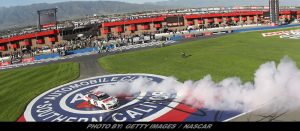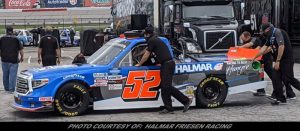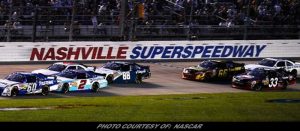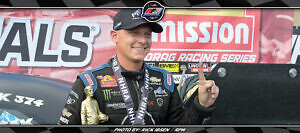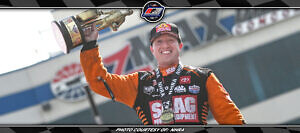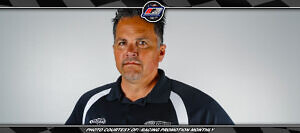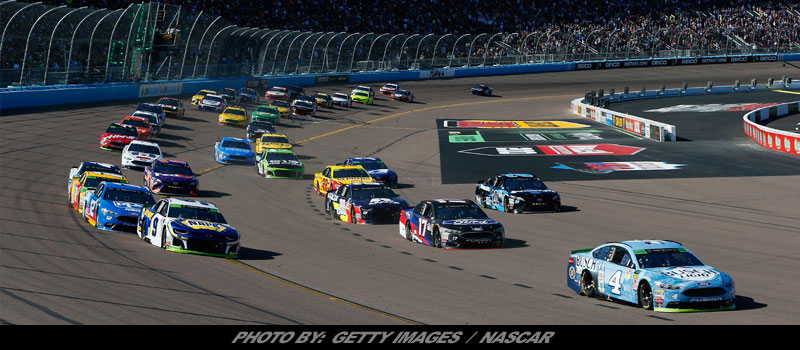
Column By: JOHN DOUGLAS / RPW – HOMESTEAD, FL – As the NASCAR season took to the track this weekend to determine the champions of its top three national touring series, the highs and lows were amplified by the totality that comes with the end of the racing season. This week, we look back on a season of tumult, trial and triumph. We also look ahead to the changes coming for 2019 and what they might mean for the NASCAR racing landscape and the sport’s future.
The Good:
We saw a coming of age for many young talents across the top three series of NASCAR in 2018, as Chase Elliott got his first victory at Watkins Glen, then backed it up with wins at Dover and Kansas. His 2018 was one of gaining confidence.
The son of Bill Elliott, he has firmly stepped out of the shadow of his father’s own legendary driving career to forge a name for himself in NASCAR. A loyal fan following of both young and old, Elliott’s story is much like Dale Earnhardt Jr.’s, in that he has carried a certain burden of his father’s legacy. Also, like Earnhardt Jr., he has done so with class and respect. A good look for a sport with much change on the horizon.
Brett Moffitt won the NASCAR Camping World Truck Series Championship with Hattori Racing, after struggling just to make the race some weeks of this 2018 season. The small group of mechanics and the young shoe from Grimes, IA went on a tear, winning six races. Including the final two at ISM (Phoenix) Raceway and Homestead-Miami Speedway.
His Championship represents a real victory for the underdogs of this sport.
With funding coming literally at the last minute multiple times this season, Moffitt and his team rallied around the realization that they were championship worthy competitors and created one of the best stories in the sport since Martin Truex Jr’s. Championship with Furniture Row Racing last season.
The Bad:
On more than one occasion this season, we saw the lack of structure in NASCAR’s executive offices lead to controversy, questionable behavior and instability. With the arrest of NASCAR CEO Brian France under drug-related charges while driving an automobile, the sport’s image came under scrutiny in no small way.
Mainstream media ran the story of a racing organization’s leader driving under the influence, painting a bad picture of a sport where driving in a clear mind is key.
One has to wonder how those who have graciously accepted the opportunity to under-go NASCAR’s Road to Recovery plan feel about the man who put it into place now being someone who needs that very same educational and self-evaluative help himself.
In a sport where ‘the grey area’ is thrown around jokingly as something teams can play with as a way to gain an advantage on a competitor as long as they don’t get caught is starting to outgrow its purpose, and its welcome. Like many things about the sport of Stock Car Racing, times change, attitudes change and the requirements for a level, fair and competitive playing field change.
The idea that “It’s only cheating if you get caught” must be abolished sooner rather than later. The days of Smokey Yunick showing up with a tricked out Chevelle for the Daytona 500, or Jeff Gordon showing up with the T-Rex car are over…dead and long gone.
Though no one may be willing to admit it. There is no reasonable excuse for any team on any tier of the National touring level to show up to a race track with a car that is ridiculously outside the NASCAR Rule Book with collapsing rear windows, tricked up rear spoilers or flared-out side skirts ever again.
Top NASCAR teams have 60 engineers employed with their organizations, along with over 100 on-track officials from the sanction itself, laser guidance systems for the inspection of every race car, and supposedly knowledgeable individuals leading it all from the NASCAR hauler and tower.
Letting anyone run a team worth multiple tens of millions of dollars from sponsors, paying drivers and other means of income keep a win after failing post-race inspection is more a slap in the face to the ticket buying fan that the elbow nudge, wink and sly grin shenanigans that it used to be.
Instead we’re talking serious business, serious money and serious consequences in the revenue of tracks and the sport in general when a team knowingly games the system and is allowed to keep the money and the trophy.
The Ugly:
The future of NASCAR’s top series is not as bright as one would hope it to be. Instead of listening to the fans of this sport who want more true-to-form Stock Car racing competition on track with high horsepower, low downforce and an emphasis on driving skill, we will be welcomed at most tracks throughout the 2019 season with the exact opposite.
Higher downforce, lower horsepower thanks to tapered spacers and lower overall requirement for a highly-skilled driver. Of note, NASCAR’s Truck Series in 2019 will have the same package overall as they did in 2018. This means at every single 1.5 mile track or higher, where the Cup Series will have a 600 hp engine under the hood, we will see higher top speeds from NASCAR’s No. 3 series than NASCAR’s No. 1 series. No other sanction in the world would even dare to allow that.
Indy Lights machines are 20-30 mph slower than their big brothers who compete in the Indianapolis 500 and Formula One’s little brother, Formula 2 runs almost five seconds a lap slower on almost every track they share races at. One has to wonder what NASCAR is thinking allowing its most popular series to become such a weakened form of itself at a majority of tracks it competes at.

